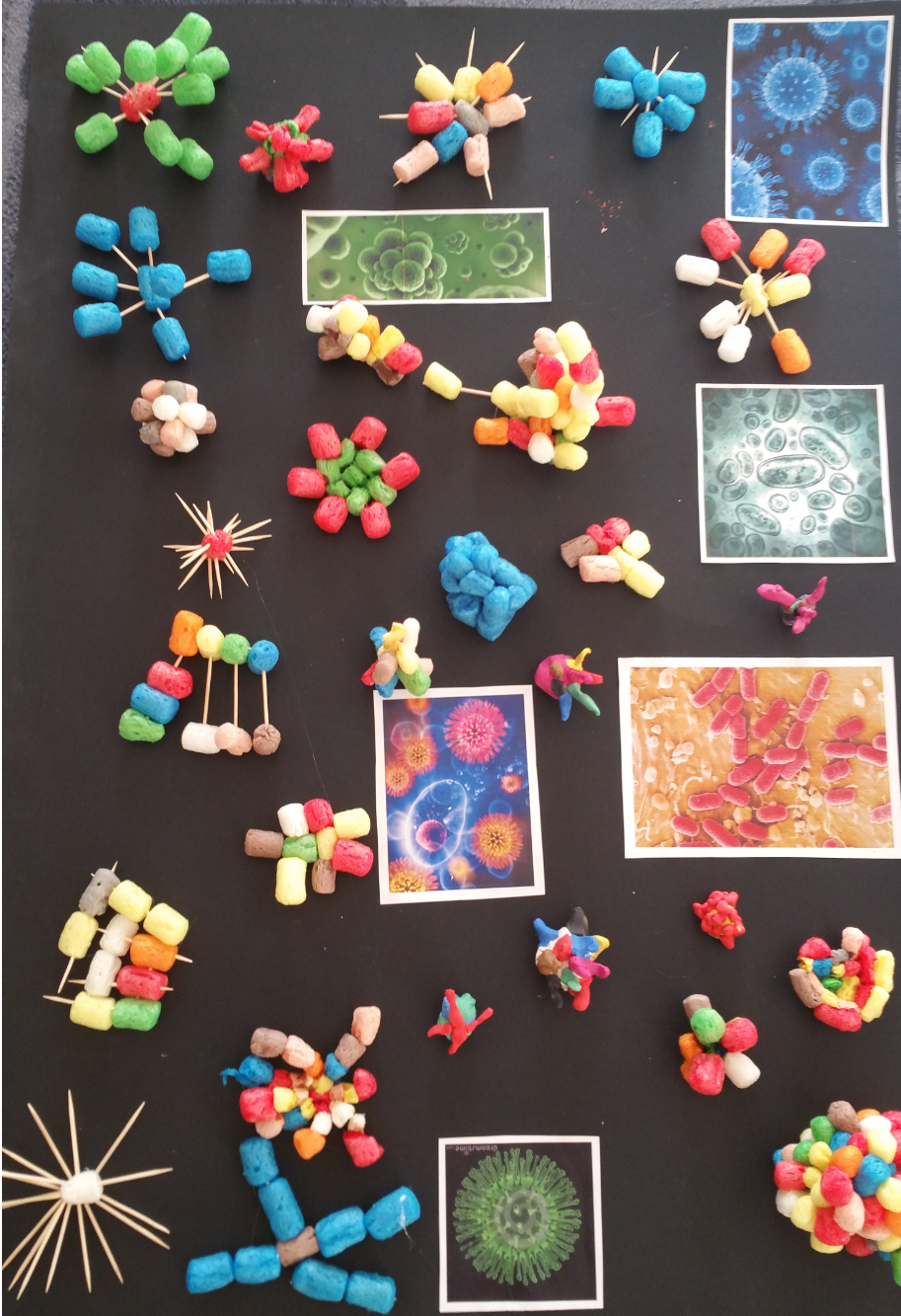3D Artworks
Clay
I often find that students who might be reluctant to draw or paint suddenly find themselves both skilled and talented when it comes to working with clay or making sculptures. Using clay or building sculptures are fantastic ways to engage students and allow them more ownership over their learning. We are always trying to provide inquiry based learning experiences and looking at ways to link learning in the classroom with learning in the art room. Some of our most successful projects have included learning about how Ancient Civilizations have influenced modern day societies and looking at how ancient art techniques influence our art making today. Students designed and make their own masks out of clay or their own warriors. Our older students after learning about migration and what causes people to move and societies to change made shoes or objects that they valued out of clay.
It can be challenging to find the right type of clay as some are quite tough for students to manipulate, others feel quite soft as if they will fall apart and not hold their shape. We are lucky enough to have our own kilns and art technicians to help us manage our high numbers of 120 students per year group.
Over the last few years, we have been making connections between our art making and our community. Our students often organise and led art exhibitions and ask families to make voluntary donations when visiting our exhibition. This is a great way to link in some service learning with art making and to raise the awareness of the importance of art in our community. Students feel that their work is more valued when displayed in a meaningful way and linked to a real-life context.
Sustainability tips: We now use giant reusable Ziploc bags with special plastic bag sealers. This helps us cut down on plastic bag waste. Make sure to spray the clay well with water before putting it away until your next lesson. Our scrap clay is of course recycled for the next lesson. For younger students we normally leave their clay a natural colour and do not paint it, we reserve glaze for special projects, as it is an expensive material and requires a lot of additional time to use.
Dale Chihuly inspired melted plastic bottle GLASS sculpture
Sculpture
Learning to design and build is a far more complicated skill than one might first imagine. During online learning I found that creating sculptures out of paper, recycled materials and tin foil to be highly engaging and manageable in a challenging online context. We use a range of materials such as wire, newspaper and masking tape, playdough, recycled materials and plaster cloth (gauze bandages). Play Mais is another fantastic medium I discovered when working in Italy. It is great to use for younger students because it is soft, colourful and students can join it together by using a dab of water which acts as glue.
Using plastic is another excellent material for sculptures and be used as a replacement for glass. Manipulating plastic safely requires use of specific tools and completing some safety training. I highly recommend purchasing a heat gun and soldering tools which you can use to pierce holes into plastics and to melt plastics into different shapes. We only use these tools with students and teachers on a 1 to 1 basis, wearing heat gloves and safety goggles. You can also fuse plastic bags together using parchment (baking paper) and a hot iron and this can create interesting shapes as well.
When beginning a sculpture unit, I like to first provide students with several opportunities to explore and experiment with different materials. I found that given time and space, students discovered their own ways to join materials and shared their ideas with each other. Our next step is always to enhance their own discoveries with explicit teacher led joining techniques. Once students have a toolbox of techniques, they find it easier and more satisfying to design, build and redesign a stable sculpture.
Bamboo Tepee installation art in our playground
Installation
Students normally love learning about installation art and public art. There are endless examples of colourful and creative ways that artists have deliberately changed a space and these images captivate student’s imaginations. I have attempted on a number of occasions to work with students to create installation artworks, the real challenge being to make a lot of something, to have the time to do a project such as this and enough of a materials.
One of our most successful collaborative projects across the whole of primary school involved 530 creating imaginary 3D plants in order to enhance our student dining room. Different year groups used different materials such as; papier-mâché, cardboard or recycled materials. Their hard work resulted in a gorgeous sea of ‘fake plants’, which we then displayed in our canteen area for the whole year.
During a special art week, a team of talented students wove fabric into giant bamboo tepees and changed a specific space in our playground area.
Our year 5 students have also created recycled fashion clothing for a dual purpose, a real-life fashion show on sustainability and to be displayed in our outdoor play area to ‘beautify’ a space. We are hoping that our ‘plastic fashion’ can be hung up on coat hangers in our playground and withstand the rain.

















